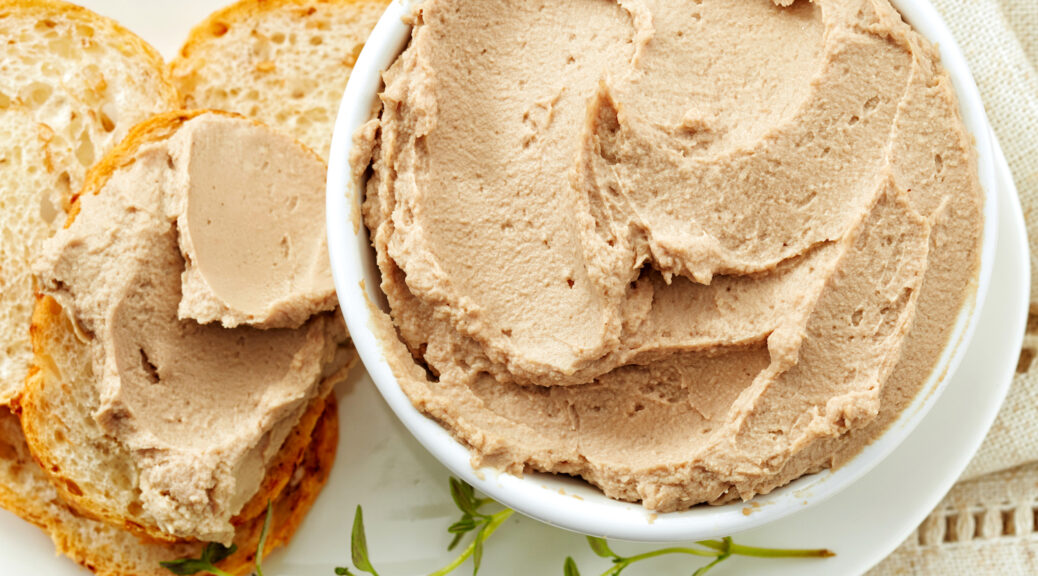
How to Make Potted Meat
When I was a child, my mother bought small cans of potted meat and spread it on bread to make sandwiches. I didn’t think much of it at the time, but I should buy some to try again, or make my own.
In the days before electric refrigeration, if meat couldn’t be eaten right away, it had to preserved somehow. One way of preserving meat was by potting it.
Essentially, to pot meat, cook it, cut in small pieces, pound to a paste, pack in a pot to exclude the air, and cover with hot fat or paste.
INFORMATION BELOW FROM 180s COOKBOOKS
POTTING
For potting, one should have small stone or earthen jars, a little larger at the top than at the bottom, so that the meat may be taken out whole, and then cut in thin slices. All kinds of cooked meats and fish can be potted. The meat must, of course, be well cooked and tender, so that it can be readily pounded to a paste. When the potted meat or fish is to be served, scrape off all the butter, run a knife between the meat and the jar, and when the meat is loosened, turn it out on a dish. Cut it in thin slices and garnish with parsley; or serve it whole, and slice it at the table. The butter that covered meats can be used for basting roasted meats, and that which covered fish can be used for basting baking fish.
You may pot odds and ends of any meat or fish you have, and as a little potted meat goes a long way, you will then have a little stock of dainties in the house to fall back on at any time for unexpected calls—a very important thing in the country.
CLARIFIED BUTTER
To make clarified butter for potted things, put some butter into a sauceboat, and set it over the fire in a stew-pan that has a little water in it. When the butter is dissolved, the milky parts will sink to the bottom, and care must be taken not to pour them over things to be potted.
POTTED BEEF
The round is the best piece for potting, and you may use both the upper and under part. Take ten pounds of beef, remove all the fat, and cut the lean into square pieces, two inches thick. Mix together three teaspoons of salt, and one teaspoon each of pepper, cloves, mace, cinnamon, allspice, thyme, and sweet basil
Put a layer of the pieces of beef into an earthen pot and sprinkle some of this spice mixture over this layer. Add a piece of fat salt pork, cut as thin as possible, and sprinkle a little of the spice mixture over the pork. Make another layer of the beef with spices and pork, and so on, until the pot is filled. Pour over the whole three tablespoons of Tarragon vinegar, or half a pint of Madeira wine.
Cover the pot with a paste made of flour and water, so that no steam can escape. Put the pot into an oven, moderately heated, and let it stand there eight hours; then set it away to use when wanted. Beef cooked in this manner will keep good for a fortnight* in moderate weather. It is an excellent relish for breakfast and may be eaten either warm or cold. When eaten warm, serve with slices of lemon.
*fortnight – a period of two weeks.
Potted Beef Another Way – Take beef that has been either boiled or roasted. Beat it in a mortar with some pepper and salt, a few cloves, grated nutmeg, and a little fine butter just warm. This eats as well as the former, but the color is not so fine. It is, however, a good way for using the remains of a large joint.
POTTED HAM
Cut all the meat, fat and lean, from the remains of a boiled ham, being careful not to mix with it either the outside pieces or the gristle. Chop very fine, and pound to a paste with the vegetable masher. To each pint of the paste add one teaspoon of mixed mustard and a speck of cayenne, and, if there was not much fat on the meat, one tablespoon of butter. Pack this smoothly in small earthen jars. Paste paper over these, and put on the covers. Place the pots in a baking pan filled with hot water, and bake slowly two hours. Cool with the covers on. When cold, take off the covers and pour melted butter over the meat. Cover again, and set away in a cool place. If well seasoned, it will keep a long time in winter. A jar of this will be found useful to travelers in remote places, is a nice relish for tea, and makes delicious sandwiches.
POTTED CHICKEN
Strip the meat from the bones of a cold roast fowl. To every pound of meat, allow a quarter of a pound of butter, salt and cayenne pepper to taste, one teaspoon of pounded mace, and half a small nutmeg. Cut the meat into small pieces, pound it well with the butter, sprinkle in the spices gradually, and keep pounding until reduced to a perfectly smooth paste. Two or three slices of ham minced and pounded with the meat will be an improvement. Pack it into small jars and cover with clarified butter, about a quarter of an inch in thickness and keep in a dry place. A nice luncheon or breakfast dish.
POTTED FISH
Take any kind of cooked fish and free it of skin and bones, although salmon and halibut are the best for potting. Pound the fish to a paste. To each quart of fish, add one tablespoon of essence of anchovy, three of butter, two teaspoons salt, a little white pepper, and a speck of cayenne. When all the ingredients are thoroughly mixed, pack the fish closely in little size jars. Place these in a pan of water, put in a moderate oven,* and cook forty-five minutes. When cold, pour melted butter over the fish. Paste paper over the top and set it way.
* moderate oven – about 350-400 degrees Fahrenheit.
Image from Deposit Photos
=================================================
Have You Ever Eaten Potted Meat? Please Leave a Comment Below.
=================================================
A Guide to Canning, Freezing, Curing & Smoking Meat, Fish & Game
This no-nonsense reference book covers all the major meat preserving techniques and how to best implement them. You’ll learn how to corn beef, pickle tripe, smoke sausage, cure turkey, and much more, all without using harsh chemicals. You’ll soon be frying up delicious homemade bacon for breakfast and packing your travel bag with tender jerky for snack time.
=================================================

Typical books about preserving garden produce nearly always assume that modern “kitchen gardeners” will boil or freeze their vegetables and fruits. Yet here is a book that goes back to the future—celebrating traditional but little-known French techniques for storing and preserving edibles in ways that maximize flavor and nutrition.
Translated into English, and with a new foreword by Deborah Madison, this book deliberately ignores freezing and high-temperature canning in favor of methods that are superior because they are less costly and more energy-efficient.
=================================================
Have You Ever Eated Potted Meat? Please Leave a Comment Below.
=================================================


3 thoughts on “How to Make Potted Meat”
We were brought up on potted meat.
My mother gave us some occasionally (from a can), but I didn’t care for the texture.
I’ve never eaten potted meat but it actually sounds pretty good. Thanks for an interesting post!